|
|
Post by onlyMark on Mar 10, 2018 12:29:56 GMT
In relative size to the dog, it would be ok. But at my size..............
|
|
|
|
Post by onlyMark on Mar 10, 2018 17:35:12 GMT
In all the time driving in the country, this was the worst accident I came across or saw. A tuktuk turning into the path of a scooter. No injuries and very minor damage – 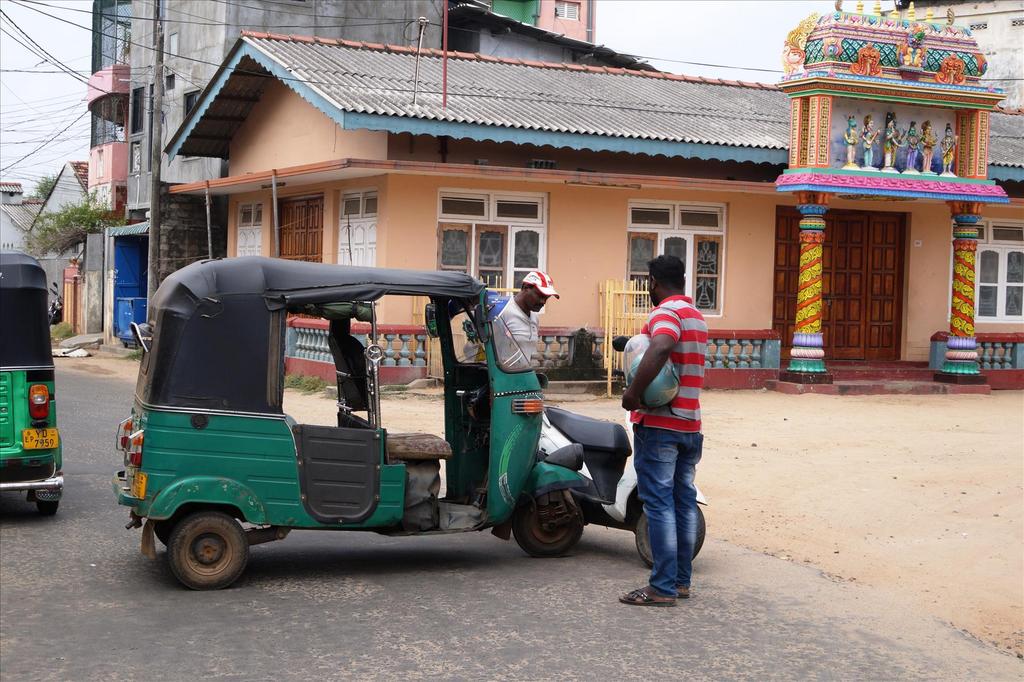 It was time to head somewhere else in the city. On a headland just outside is another temple – Koneswaram Kovil. Plus Fort Frederick. By the way, in the Tamil language the name Kovil just means temple. This one is a major pilgrim site and something to worship – in this case, Lord Shiva - possibly starting out as just a small cave with a figure inside, has been here since around the 5th century AD. Or possibly earlier depending on who you read. Over time it was enlarged and renovated. But in 1622 the Portuguese attacked and decided not just to destroy the temple, but as soldiers do, loot it as well. "Portuguese soldiers entered the temple dressed as Iyer (Hindu Brahmin) priests and began robbing it. In an act of religious zeal, the temple was then levered over the edge into the sea. Fleeing priests buried some of the temple's statues in the surrounding area, and all remaining priests, pilgrims and employees were massacred. The final monument of the temple complex was destroyed two years later in 1624. Temple stones and its carved pillars were used to construct Fort Fredrick.........." Little remained of the temple through the period of Dutch control until the British came and ceremonies were allowed to take place. It wasn't until 1963 when the modern version was built and opened. But in the meantime, in the 1950's, a number of artefacts and statues were found. Those buried to be hidden from the Portuguese. Also, the legendary science fiction author, Arthur C Clarke, whilst scuba diving nearby with a photographer called Mike Wilson, found many, many remains including an extremely important one – "The divers retrieved the legendary Swayambhu lingam from the ocean floor, a large natural stone obelisk that, according to legend, was one of 69 naturally occurring lingams from time immemorial originally found on Mount Kailash of Tibet and housed in Koneswaram by King Raavan – his most sacred power object from mythological times. This lingam was reinstalled at the Koneswaram site." The long version, and detailed, can be found here – en.wikipedia.org/wiki/Koneswaram_templeAll in all, and probably due to its recent re-build, I found the temple to be quite a lot less spectacular than the previous one, though the religious significance is far greater. I wasn't allowed in this one and I wasn't too bothered as to be explained shortly. It's up quite a steep hill on the promontory and vehicles have to be parked at the bottom. Tourist vehicles especially. I saw numerous westerners struggling somewhat in the heat and humidity to walk the road up there. I cheated. I just kept going in my tuktuk until I stopped very nearby where all the other tuktuk taxis were. I gave the drivers a nod, and walked on – 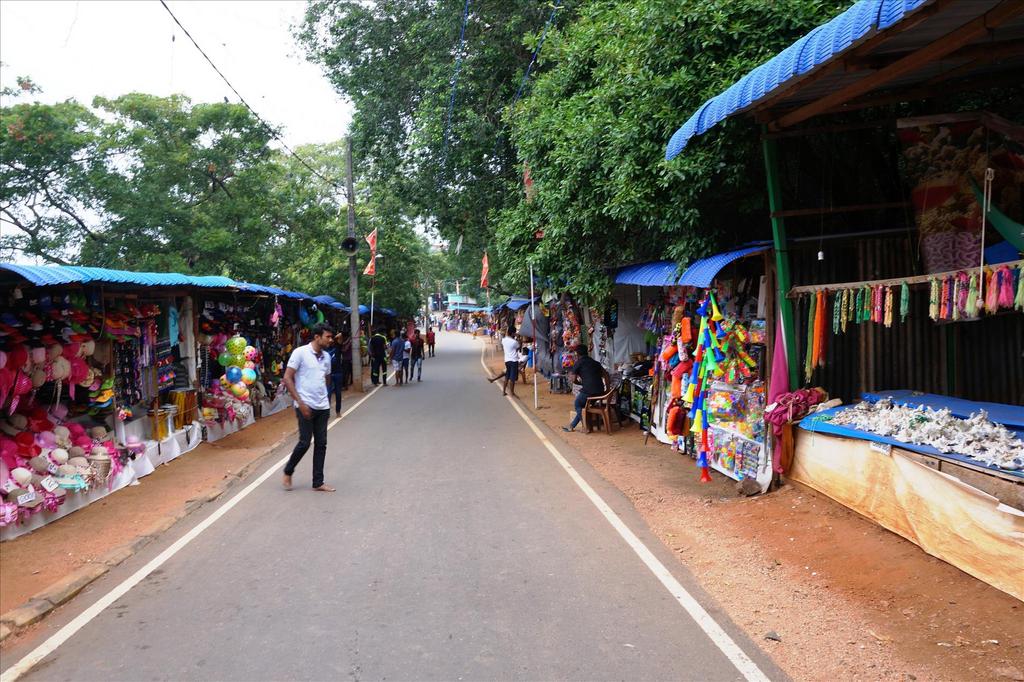   |
|
|
|
Post by onlyMark on Mar 10, 2018 17:36:44 GMT
I did remove my shoes but as it was my monthly period and I'd just had a bacon butty plus steak and chips and a chicken tikka masala, I realised I wouldn't be able to do more than have a look round the outside. Plus, as it turns out, photos of the inside are not allowed. This is where King Ravana was forced to drop his sword by Lord Shiva, around 2000BC and cleft the rock. Now called Ravana's Cleft or more recently, Lovers' Leap – named after either a Dutch woman or an English woman after a broken love affair. Or possibly over a number of Sri Lankans who have also done the same -  Moving up to the main temple area selfies are popular – 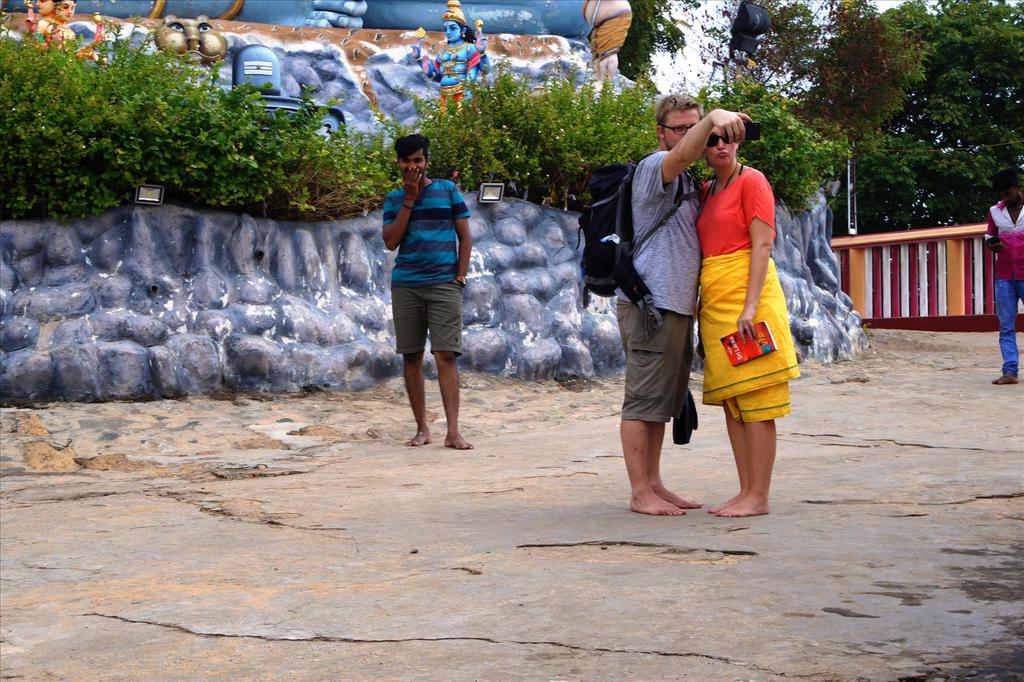 Because of this statue. Lord Shiva. I have seen recent(ish) pictures of him being all gold. When that changed I have no idea –  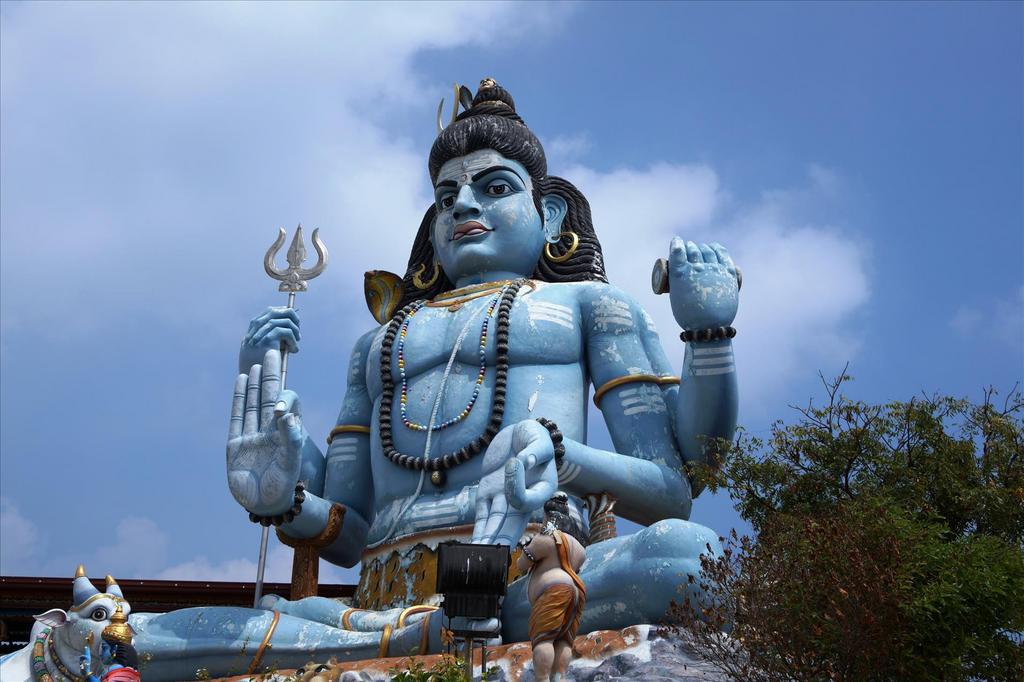 This was the start of the temple itself - 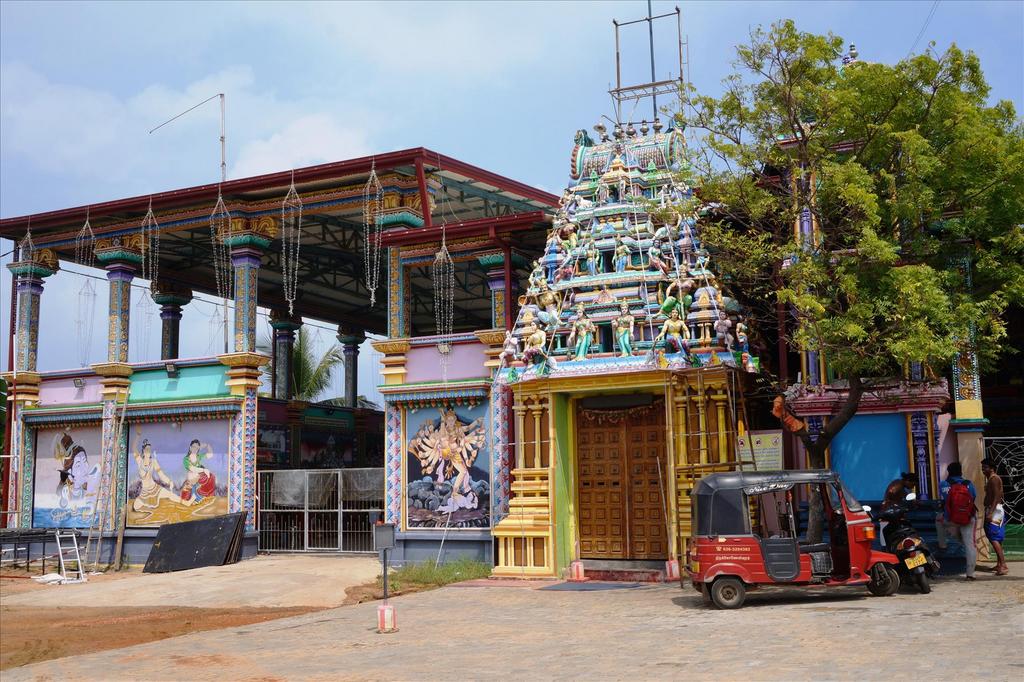 But I was distracted a moment by this – 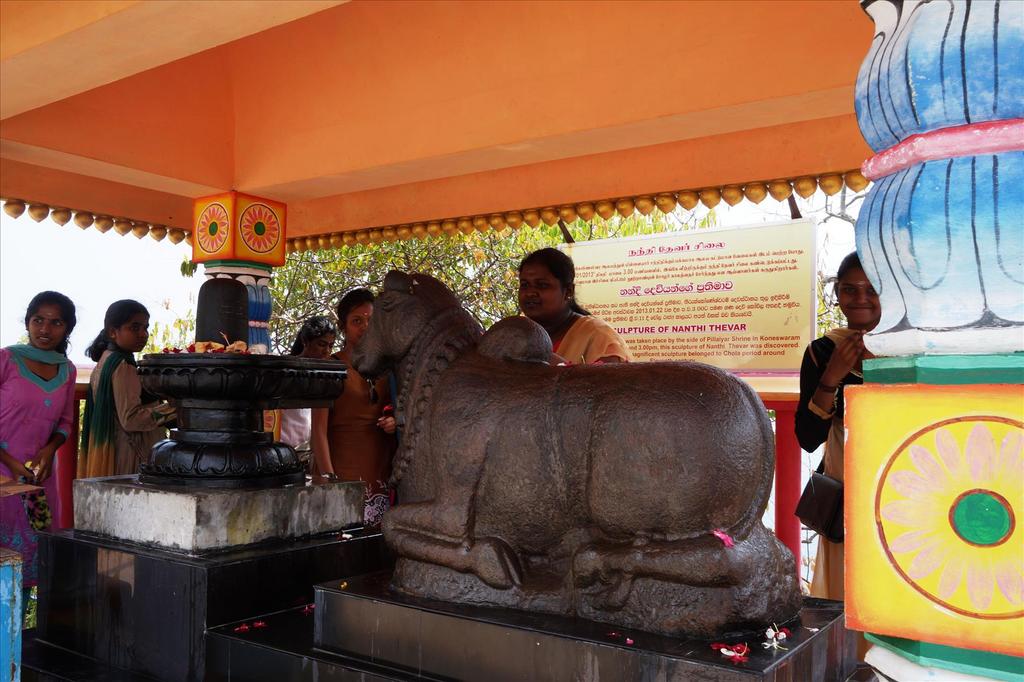 |
|
|
|
Post by onlyMark on Mar 10, 2018 17:38:36 GMT
|
|
|
|
Post by onlyMark on Mar 10, 2018 17:42:20 GMT
So a last walk round and down the hill to the fort. After retrieving my shoes. On the road up, just after the first photo with the stalls, you have to leave your footwear. No problem as it is a sign of respect. But the problem is you still have a little way to go, plus climbing steps, to the temple. The ground isn't rough, but it is unshaded and I saw more than one child being carried by its parents even though it wasn't a particularly hot day and somewhat overcast. The shoe man had a big wooden rack where he kept them. Nearby is a guard/policeman who will stop you if you don't take them off, plus, as happened to a westerner I saw, he'll make you take them out of your bag that you've stashed them in as you think they'll be stolen. The shoe man gets 20 rupees for each pair, about 10 cent, or if you are a westerner he'll ask for 200 rupees, about 1 Euro. Guess what I gave him? I gave him the twenty because I am mean, nasty and cynical as I know that as long as he gets away with charging 200 he'll eventually up it to 300 and then 400. It's the way of the world and I don't mind paying oftentimes the higher western rate for sites (of which actually there is a large number of arguments about the different price structures where there is many times a twenty fold difference between tourist and local rates) – but sometimes I'll dig my heels in when I feel I'm being taken advantage of. I make my way downhill, looking at the view and noticing the (protected) deer lazing around  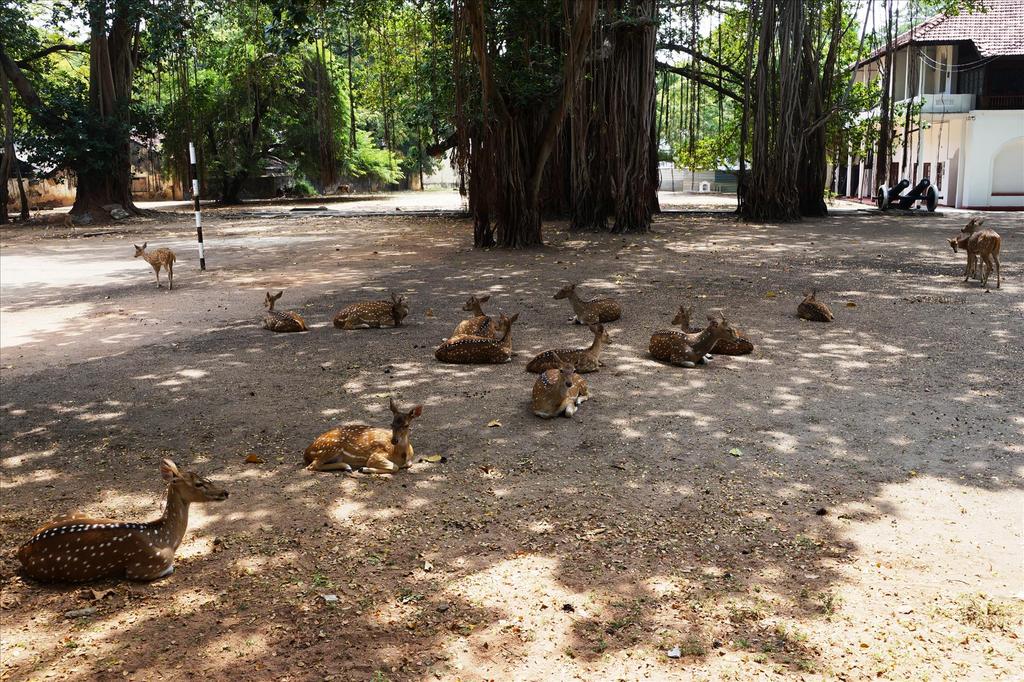 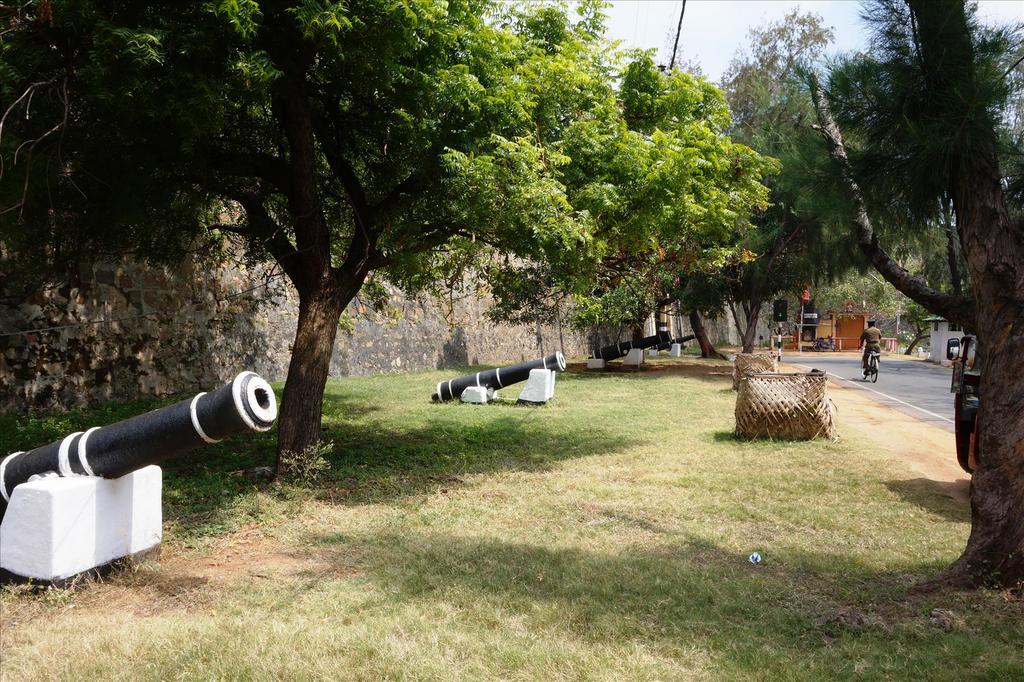 |
|
|
|
Post by onlyMark on Mar 10, 2018 17:45:47 GMT
The main entrance, now used by vehicles and with a set of traffic lights to control the flow – 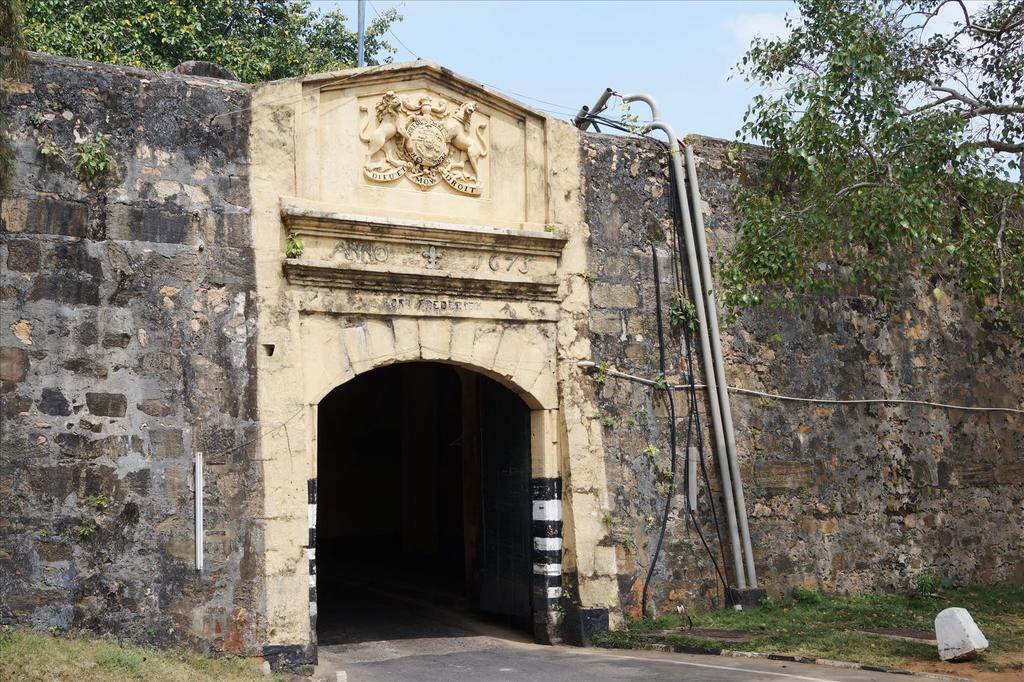 Known as Fort Frederick, was built by the Portuguese around 1624, captured and destroyed by the Dutch in 1639 and who re-built it in 1665. It was here that the original Hindu temple was situated with a "thousand pillars". It changed hands a couple of more times to the French and then back to the Dutch to ultimately be taken over by the British in 1795 until 1948. There is still a garrison here of Sri Lankan troops, but access is denied to the public, hence little is now able to be seen – 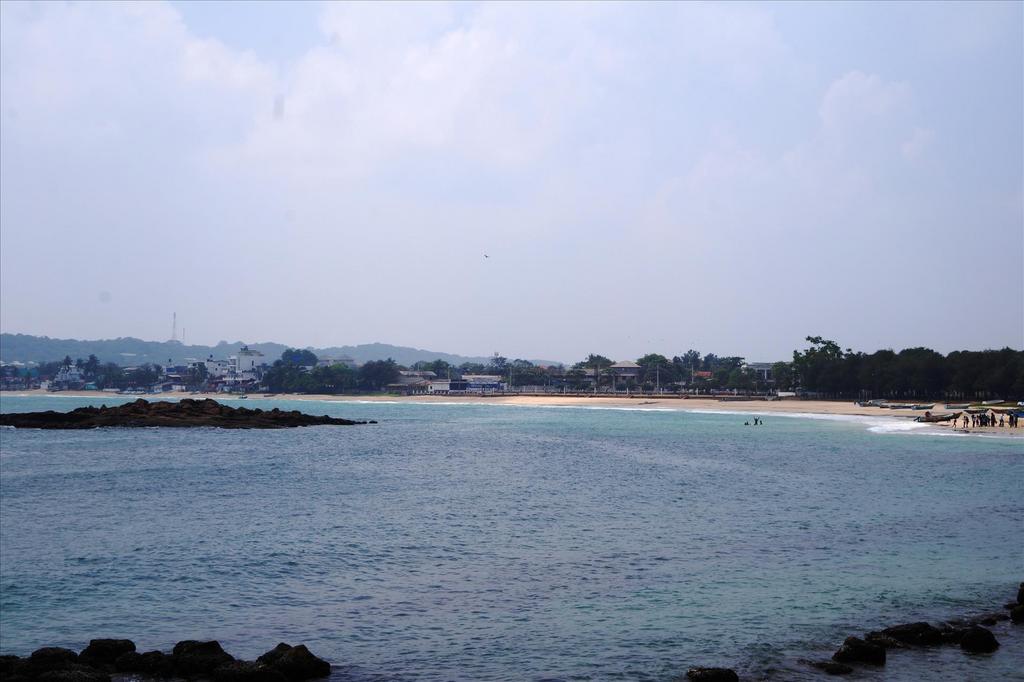 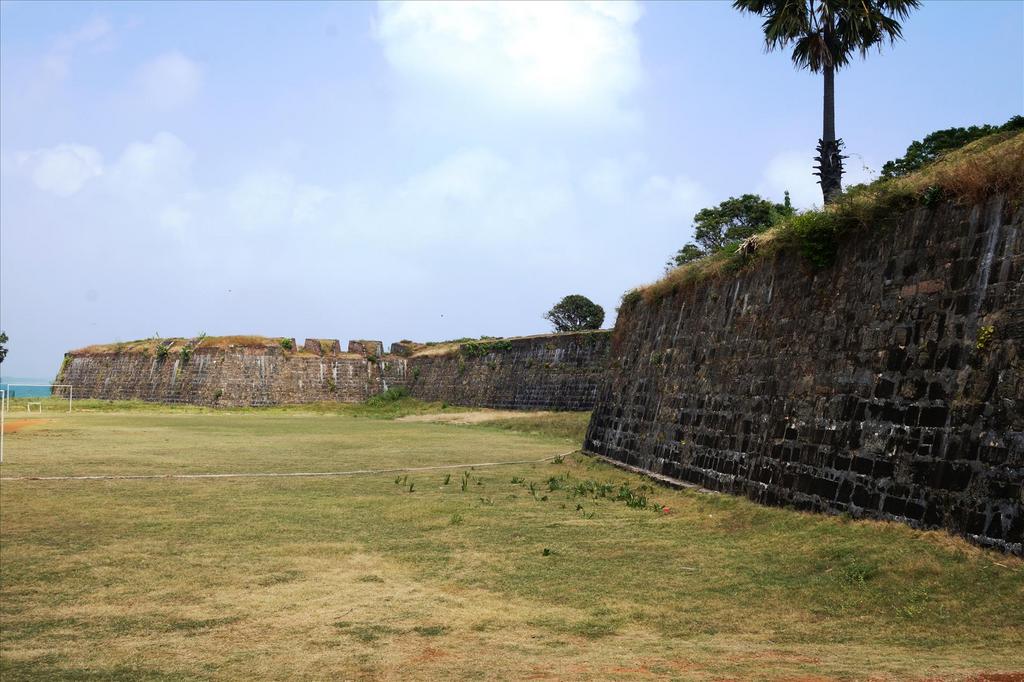  On my way earlier from the military cemetery I came across a rather forlorn local cemetery abutting the shore. I headed back to it - 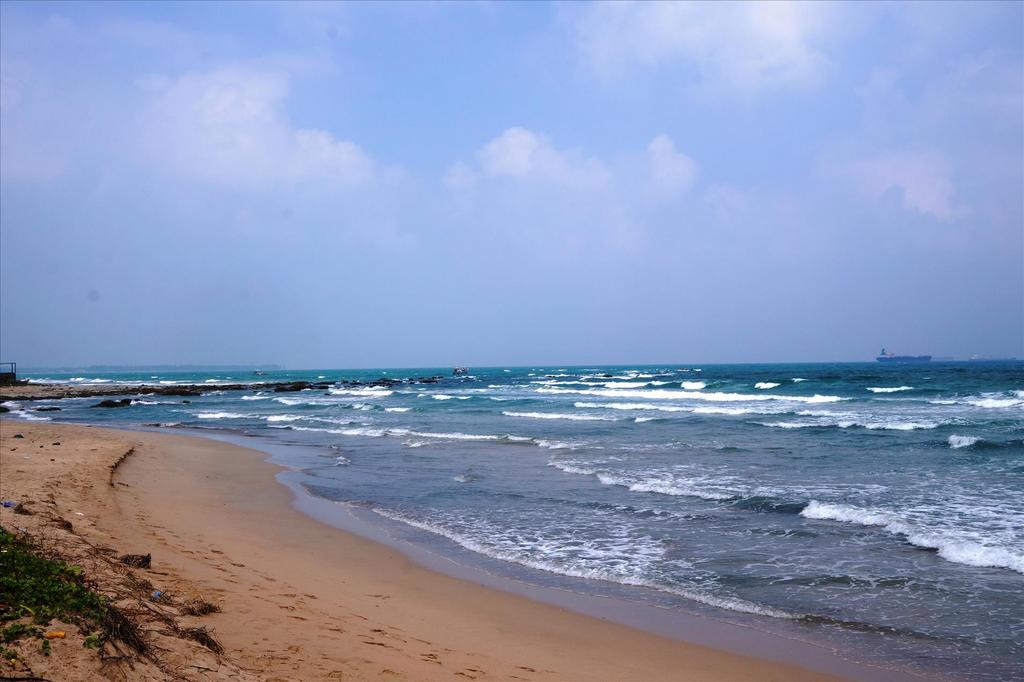 |
|
|
|
Post by onlyMark on Mar 10, 2018 17:48:21 GMT
|
|
|
|
Post by kerouac2 on Mar 10, 2018 18:18:26 GMT
I would assume (possibly incorrectly) that the way various cemeteries are tended in different cultures has more to do with religious beliefs than simple indolence. For example, cultures that believe in reincarnation might think that someone's tomb is just a temporary repository and one can go traipsing away to a new life without worrying about a burial site.
There is also the possibility of just having other priorities when life is a bit complicated already.
In that more recent temple, I find myself wondering about the bodies of the deities portrayed. Most (but not all) of them are shown to be rather obese with thing bulging out all over the place. I guess it's because that's the way they've always been shown and you have to keep it up. In olden times, fat people were the best because it proved that they had enough to eat in a society that had difficulty getting properly fed. (Same in China.) Frankly, I have never seen a statue of an obese or even a husky Christ, so I suspect that in our culture we would be shocked to see such a representation, and yet most Renaissance painting is a bit overweight. I guess the Hindu gods will always be chubby, even if you make a new statue this year.
They really build forts to last. Even in France, some of the forts that are 300 or more years old are still in use by the military.
|
|
|
|
Post by onlyMark on Mar 10, 2018 19:14:26 GMT
I can't really comment on this cemetery and others I saw in Sri Lanka. Without a specific sign saying which church/temple or whatever it is from I have no idea what the religion would be. I can only surmise but probably inaccurately.
What I can comment on though is the state of the cemeteries here in Zambia. Some time ago I did slip up a few photos of a local (Christian) one, and it was in an appalling state - appalling by our standards anyway. It may be the norm here and nobody is particularly bothered. It may be down to having many other things to do by the relatives, like working and trying to eke out a living.
They may have 'better' things to do with their time off plus the cemetery could well be quite some distance away.
It may be that the cemetery workers get paid and do nothing.
A general combination of the above more than likely.
I know I have not visited the grave of my parents for many years now, but I have some trust that the gardener will be keeping things looked after.
I understand many cultures associate fatness with, if not health, then with wealth. In Spain I have been asked, "How is your belly?" If I reply, "Getting bigger" then they are satisfied.
An overweight Christ would take quite some getting used to and it is seemingly an anomaly/contradiction that when Rubens was depicting women, cherubs and males, only the men were quite 'buffed'. It'd be interesting to see the reaction if you crossed Christ with Henry the Eighth.
|
|
|
|
Post by onlyMark on Mar 11, 2018 20:23:55 GMT
I carried on heading north the next day, my aim was to get to Jaffna eventually with a stopover on the way. A normal travelling day up the coast with nothing much of note. Breakfast and lunch on the road and dinner at a nearby hotel as the guesthouse I was staying at didn't do meals. I'm not one for eating in the same place I'm staying the night anyway, so there's no loss there. In fact it didn't do much at all and when I arrived the woman even denied I had a booking. The place was empty and only had four rooms and I think she thought she could have some time off. I insisted and showed her the booking on my phone, so she jumped into action, actually lazily wandered away and told me I must now sit and wait for a room to be cleaned. I didn't hang around and just went for my walk to return later. But, as seemingly usual, whatever the room was supposed to have in it, it didn't. Again the basic bed, wardrobe and plastic chair. Hot water however was plentiful – after I'd found out how to work it. They do do nice gates here - 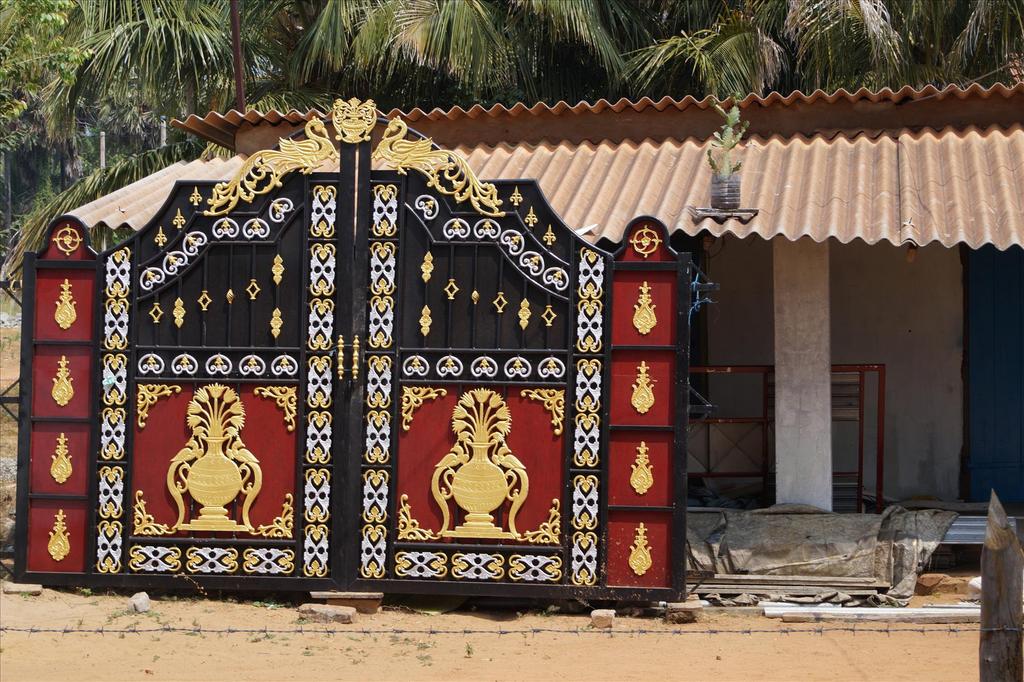 The day was so exciting I even decided to get a shot of fuelling up the tuktuk – 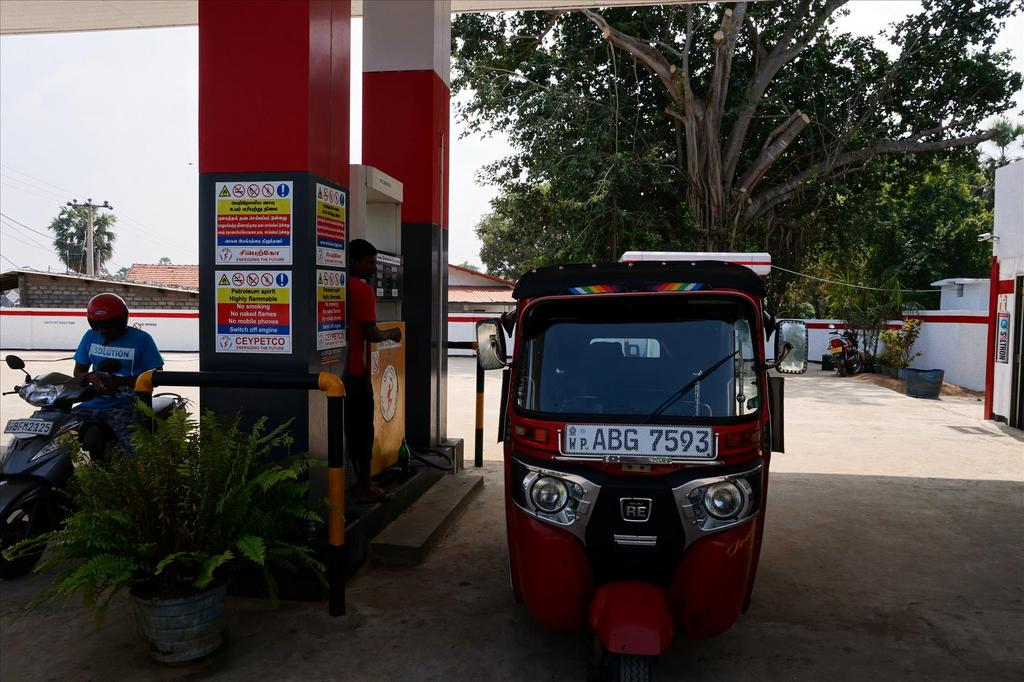 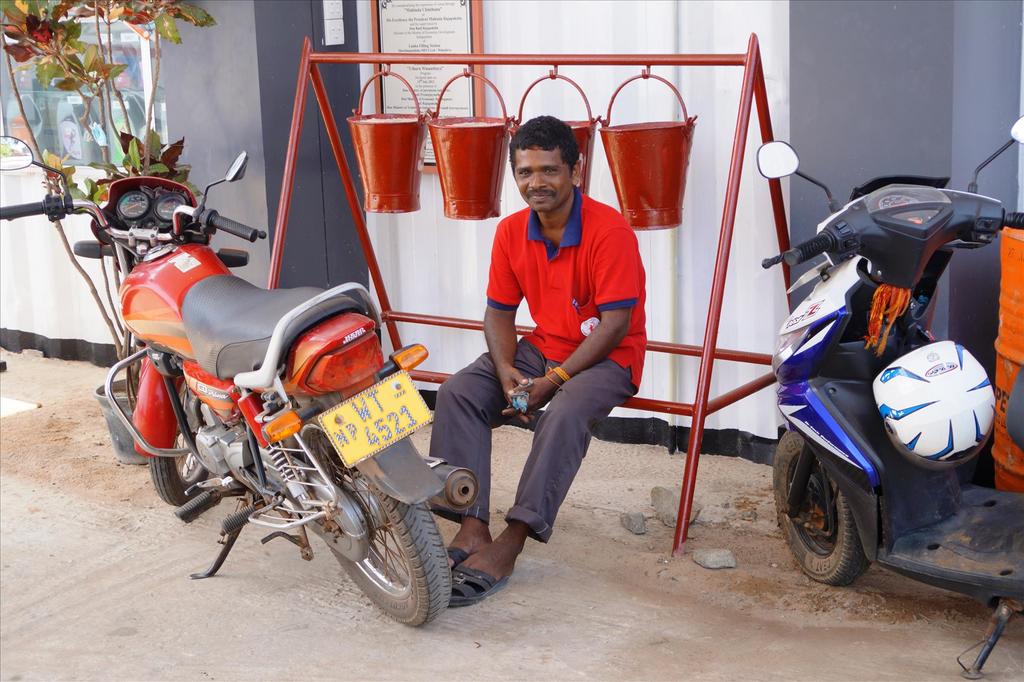  |
|
|
|
Post by onlyMark on Mar 11, 2018 20:25:28 GMT
|
|
|
|
Post by onlyMark on Mar 11, 2018 20:28:31 GMT
|
|
|
|
Post by onlyMark on Mar 11, 2018 20:32:33 GMT
|
|
|
|
Post by onlyMark on Mar 11, 2018 20:35:21 GMT
It was bounded by a wall and had notices around it stating that it was the property of the Sri Lankan archaeological society and entry was forbidden.
Really? One of the most interesting buildings I'd seen so far and I wasn't allowed in?
I snuck around the perimeter taking a few shots over the wall and saw there was just a couple of workers inside, near the middle, sitting down with their back to me. So I hopped over and as long as I was quiet and kept a wall or two between me and them, it'd be ok.
It was originally built as the residency of the British Government Agent around 1829. The Agent, Percival Ackland Dyke, bought 27 acres of land using his own money and had the building constructed, the rest to be used as a garden and grounds.
Here is a description –
" Opposite to one side of Old Park is the Old Kachcheri or the Jaffna Secretariat. Built during the time of Dyke, the building is a perfect example that showcases British Architecture in Jaffna in its prime. The entrance alone is a magnificent structure, encompassing countless Roman arches, round or semi circular in form. Depicting telltale features of Neo Renaissance architecture, the Kachcheri would have fitted snugly into the Victorian Era.
A typical feature that sets apart architectural feats of the Victorian Era is the blending of different types of stones together to provide a patterned exterior. As such coral stones running along the corners and bases of the structure with plastered brick infills—though in most places the plaster has peeled off to expose the underlying red bricks—embellished the Kachcheri. A balustrade ran over the porch and the grand verandah of the building where a balcony must have existed long ago. Walking inside, one would be at once entranced by the floor of one room, decked in an intricate mosaic that seemed to have been created using broken crockery.
Artfully broken plates had been arranged paces apart. Going further in, one would come to the courtyard. On one side a crescent passageway or colonnade runs the length while the other side consist of a squared pattern.
The Kachcheri must have been a two storied structure at one point, consisting of a wooden floor and a timber roof. Rose windows for better light and ventilation, and broken structures of eaves depict a typical adaptation in tropical countries to prevent rain water from seeping in."
It was still in use at the time of the recent civil war and part of the grounds are where the kid's park is.
In the 1970's it became a military establishment, but then was taken by the LTTE (Tamil Tigers) in the 80's and 90's but taken back again by the government forces when the city was liberated in 1995.
Quite when the majority of the destruction occurred I don't know, but as recently as 2011 there was controversy about one of the Major Generals, who was also the Governor of the Northern Province, who is alleged to have tried to raze it to the ground so that he could build his own bungalow there. He denied it.
What I did find out later doing some research is that the building and grounds were mined during the war, which they believe "had been cleared".
Ooops.
|
|
|
|
Post by onlyMark on Mar 11, 2018 20:36:27 GMT
|
|
|
|
Post by onlyMark on Mar 11, 2018 20:37:51 GMT
I made my way back onto the road again –  Nope, not eating there –  I did some more walking but as I got back to near the entrance to my hotel, I saw a few well dressed men and women exiting from a nearby shop – 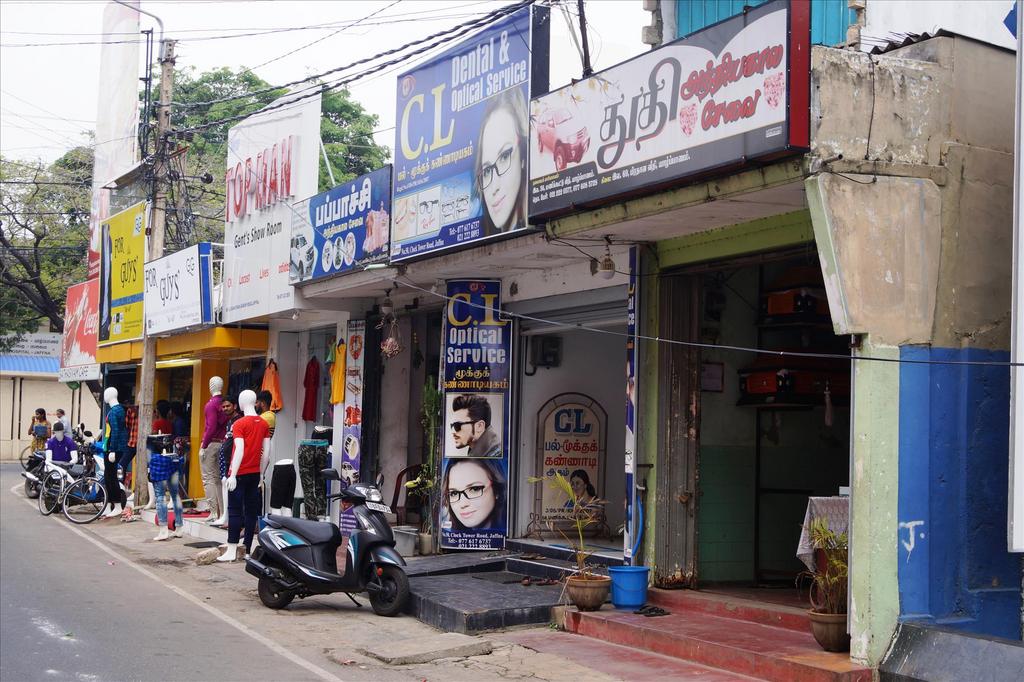 It wasn't until I got closer I understood why – 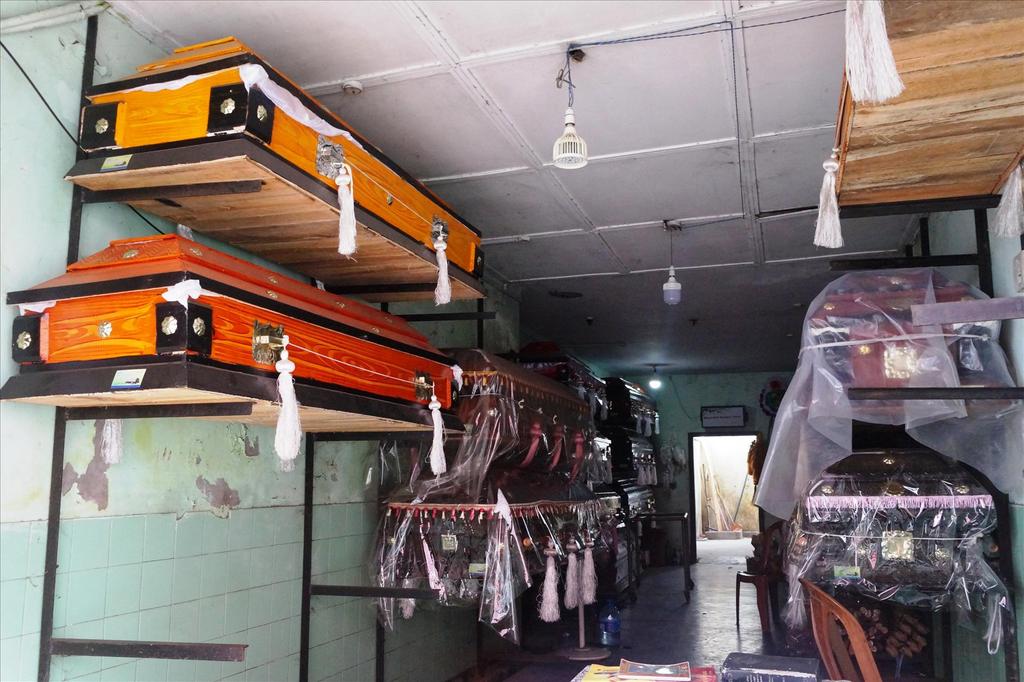 Just by the nearest junction as well was something of interest. I'll leave you with this for today – 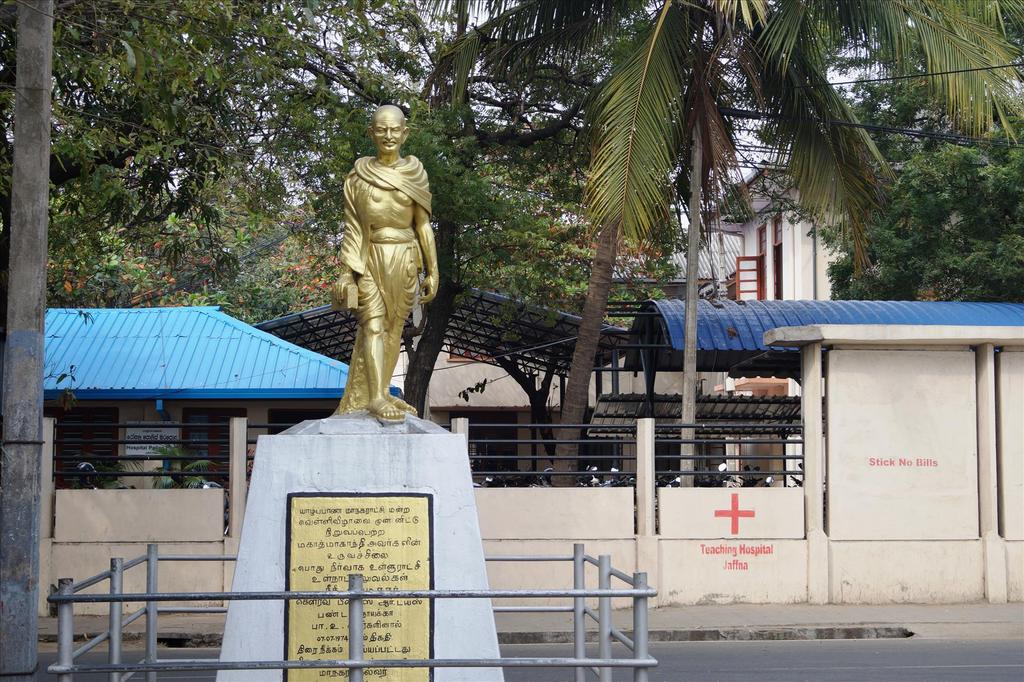  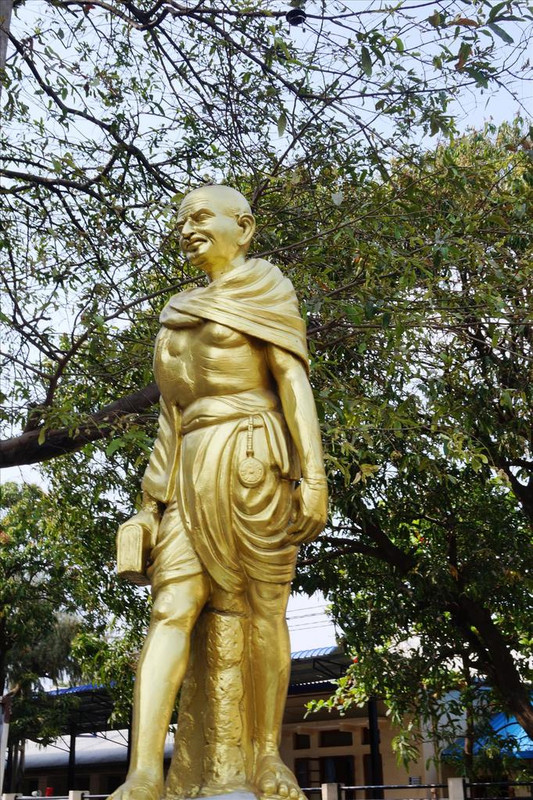 |
|
|
|
Post by onlyMark on Mar 12, 2018 16:17:27 GMT
The electric was repaired a day or so ago, but now has gone off again. We have a generator for basic needs but we don't run it usually for all day or a long time, thus I have a few things to do whilst it is on and I may not be able to update this again until tomorrow? We'll see.
|
|
|
|
Post by kerouac2 on Mar 13, 2018 5:46:53 GMT
That complex of ruins looks gigantic. If it is in a central area, it is surprising that 1) it was abandoned and allowed to fall into such extreme disrepair or 2) everything was not demolished long ago and replaced by a shopping mall with a KFC.
Regarding that statue of Gandhi, but also some of the other ones, it is always a bit surprising that they can go to a lot of trouble to create a (relatively) sophisticated statue and then affix a somewhat primitively lettered plaque (at least in terms of the English language -- I can't comment on the Srilankan script). Since the military statue earlier has totally professional lettering, I suppose it is mostly a matter of budget and not just tropical nonchalance.
|
|
|
|
Post by questa on Mar 13, 2018 9:43:00 GMT
For example, cultures that believe in reincarnation might think that someone's tomb is just a temporary repository Hindus usually cremate the body then put the ash into the sea or river. The ceremony is costly and often the body is temporally buried while the family saves the money. Sometimes it can remain buried until the spouse dies so they can be cremated together. [In Bali most poorer people wait until there are several buried people in the village rough graves, then do a mass cremation. When a Prince or such dies there are massive ceremonies and just about every family joins in cremating their relatives who may have been waiting for years. It is considered the departed get extra grace and spiritual help if they are cremated with a holy or important person.] |
|
|
|
Post by onlyMark on Mar 13, 2018 10:45:25 GMT
I've many times watched he burning of bodies on ghats and I know it can be an expensive affair. It does make sense in a way to wait so that both spouses can be cremated together. A two for one thing maybe.
K2, the ruin has been declared of archaeological interest and so probably is quite difficult to now get rid of. Considering this is only recent that it is in ruins, and the civil war got in the way, though this Governor man seems to have had a go at it, but possibly it was declared of interest soon after the war and there wasn't much chance.
|
|
|
|
Post by onlyMark on Mar 13, 2018 17:30:03 GMT
|
|
|
|
Post by onlyMark on Mar 13, 2018 17:31:10 GMT
|
|
|
|
Post by onlyMark on Mar 13, 2018 17:32:53 GMT
There's a bit of a story behind the clock tower in the city. "Built to commemorate the visit of Albert Edward, Prince of Wales to Sri Lanka in 1875, the design depicts some Moorish architectural influences, especially with the dome on top. Extensively damaged during the 1980’s, His Royal Highness Prince of Charles during his visit in 1998 pledged to restore the Clock Tower. As such with the donation of the British Government, the Tower was once again renovated to reflect its former glory and re-opened in 2002." - 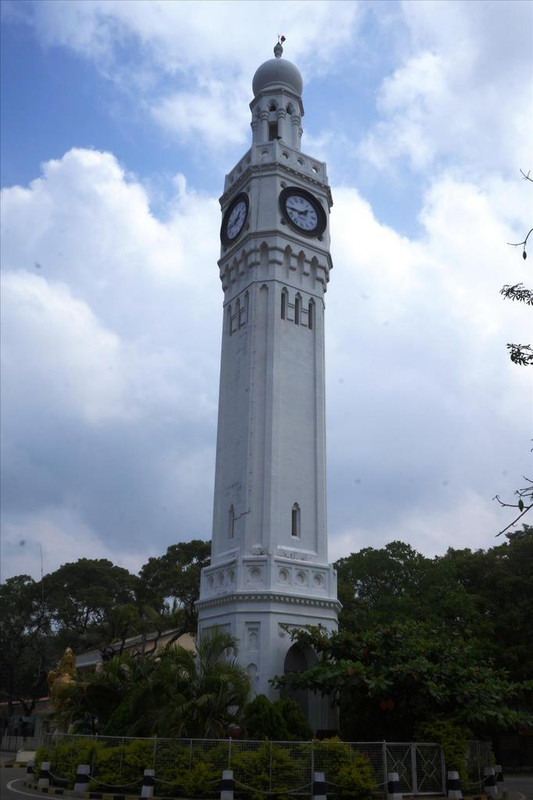 A couple more statues for you. As usual, the plaque was to me indecipherable – 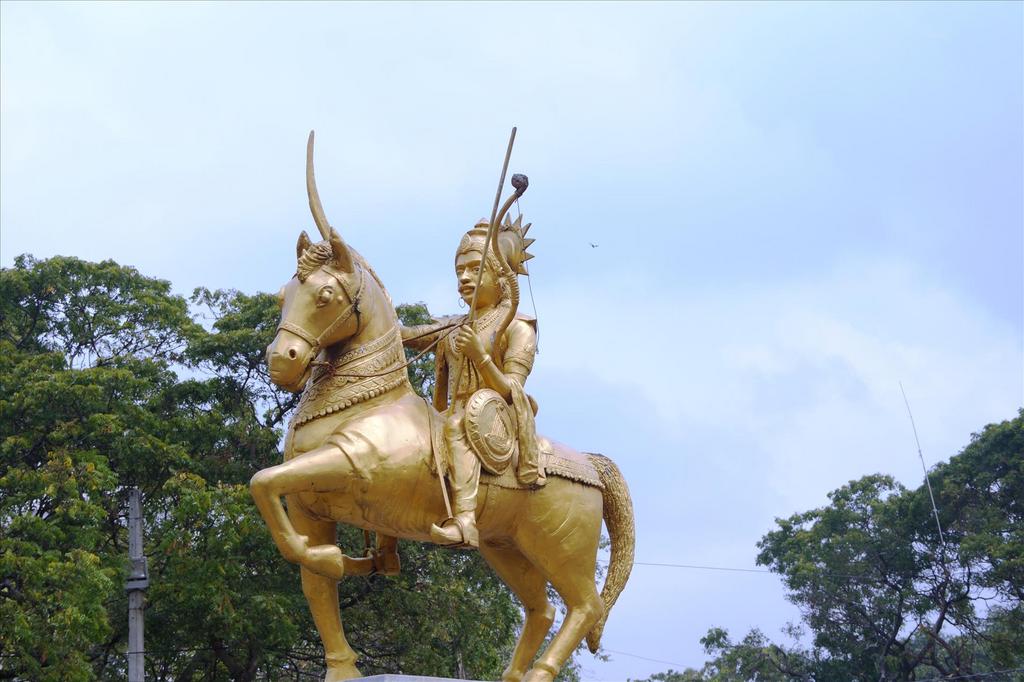 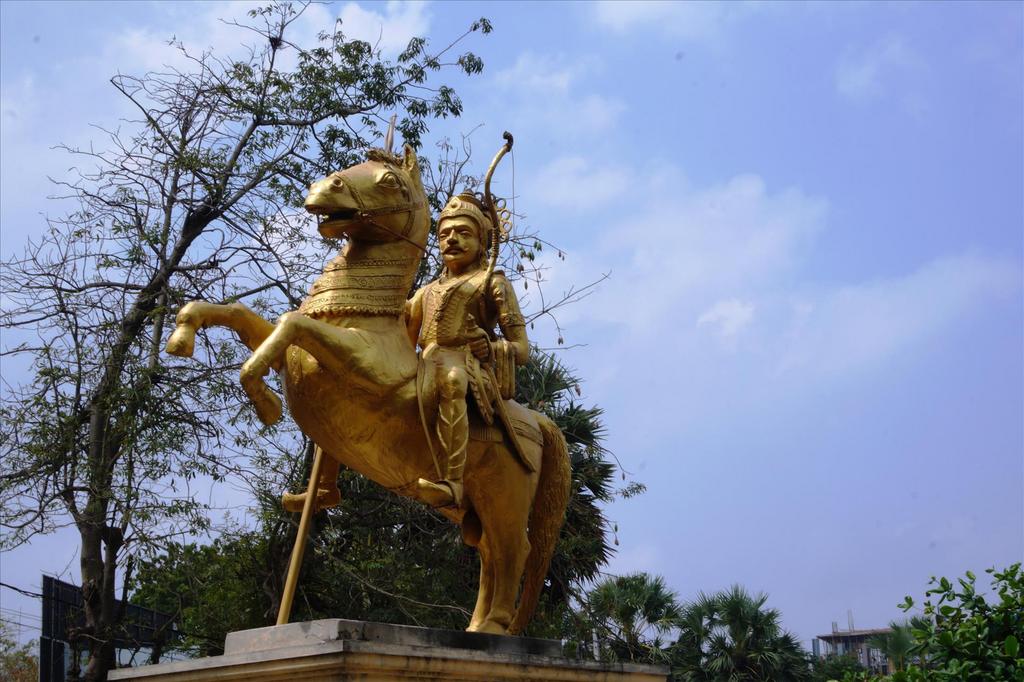 Back to something that to be honest, has greater interest for me. Normal life. This is where, if you live in the city, you will take your driving test. I came across it accidentally s it is at the side of something I was heading for –  Spot the animal –  Anyway, here you take every driving licence from motorcycle, tuktuk, bus, car and truck. At some point there has been a written exam somewhere, but not here. You then have to do no more than a manoeuvre or two and you have your licence. I was interested to see the motorbikes have to complete a slow figure of eight and that was it. Everything else it seemed just had to reverse around a corner for a pass – 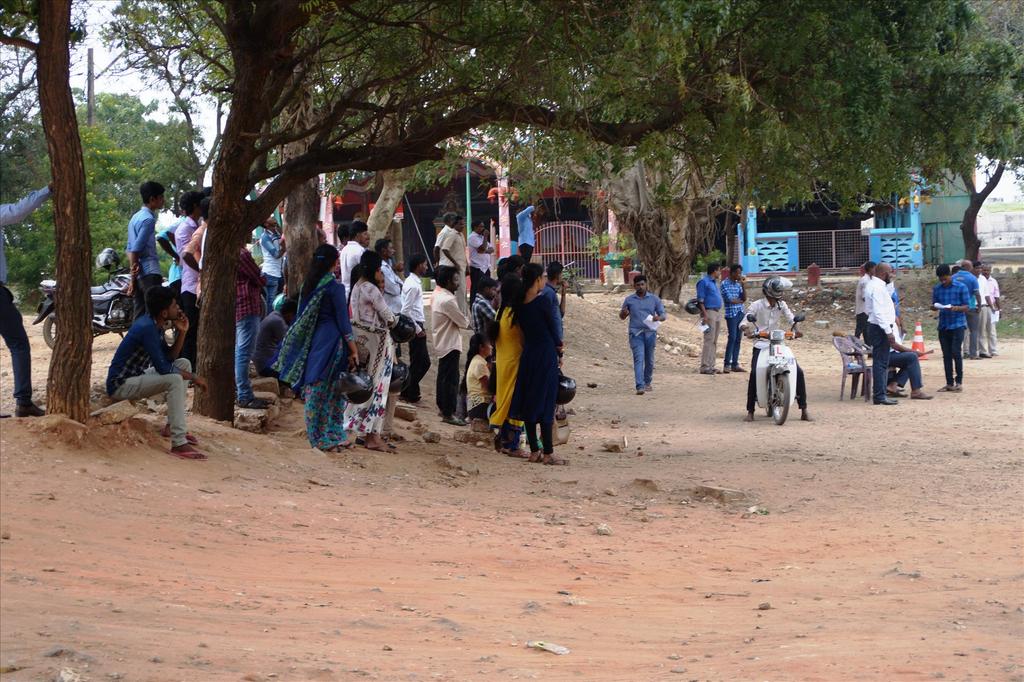  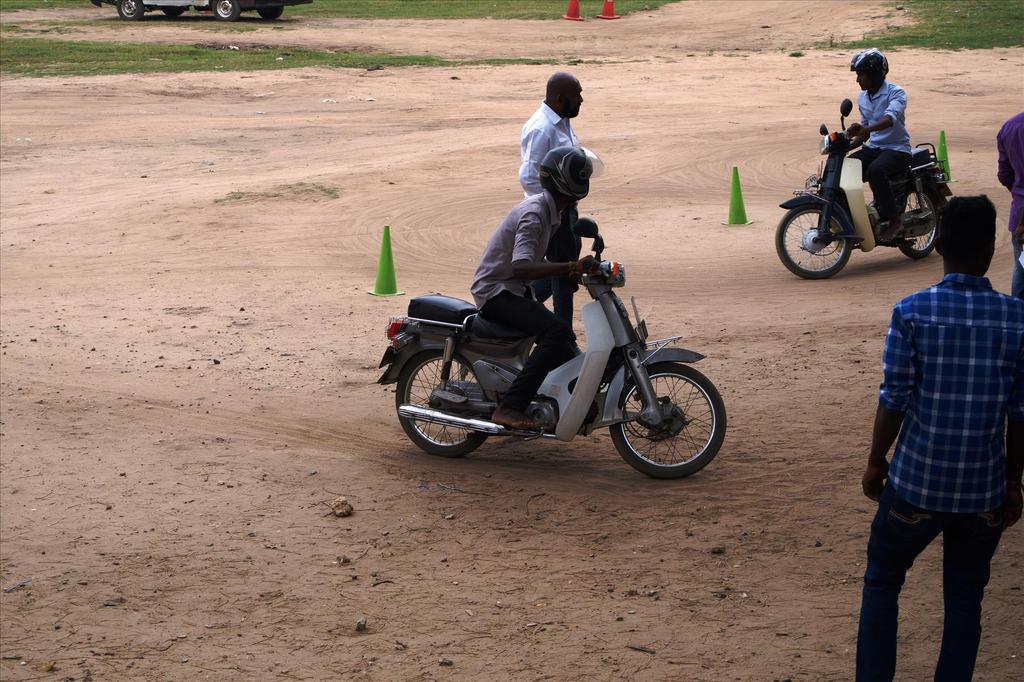 These were the examiners for the motorbikes. As far as I could gather when it came to your turn, you jumped on the already running bike, I hasten to add it was a communal one I think supplied for the day by the authorities, do your figure or eight and stop back where you started. You'd then hand your slip of paper to one of the men sitting down, who would then sign and stamp it, and away you go! –  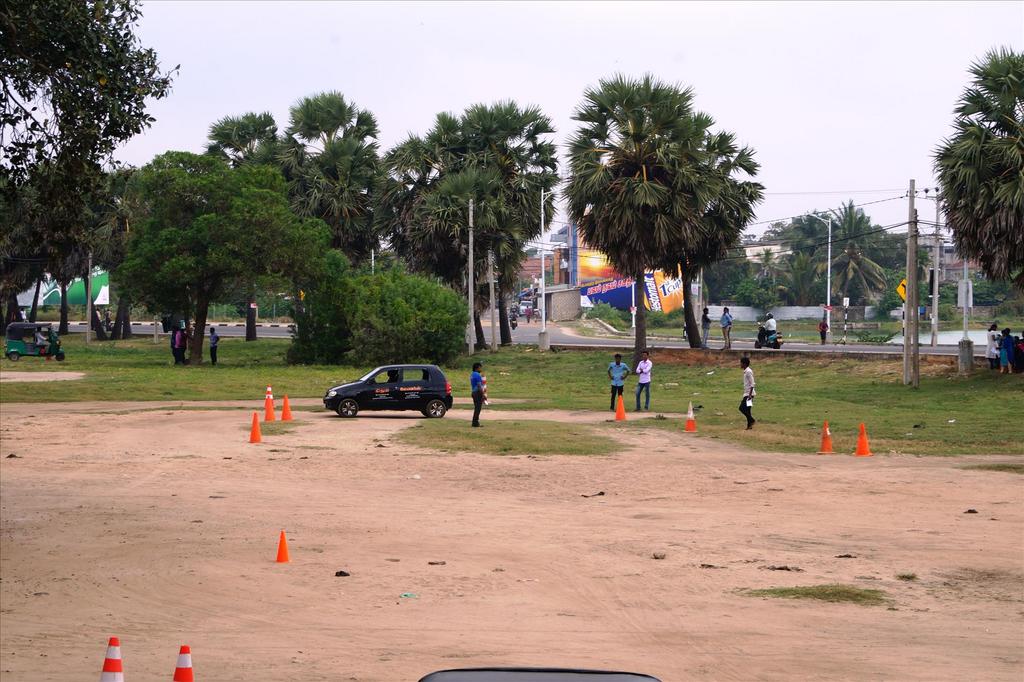 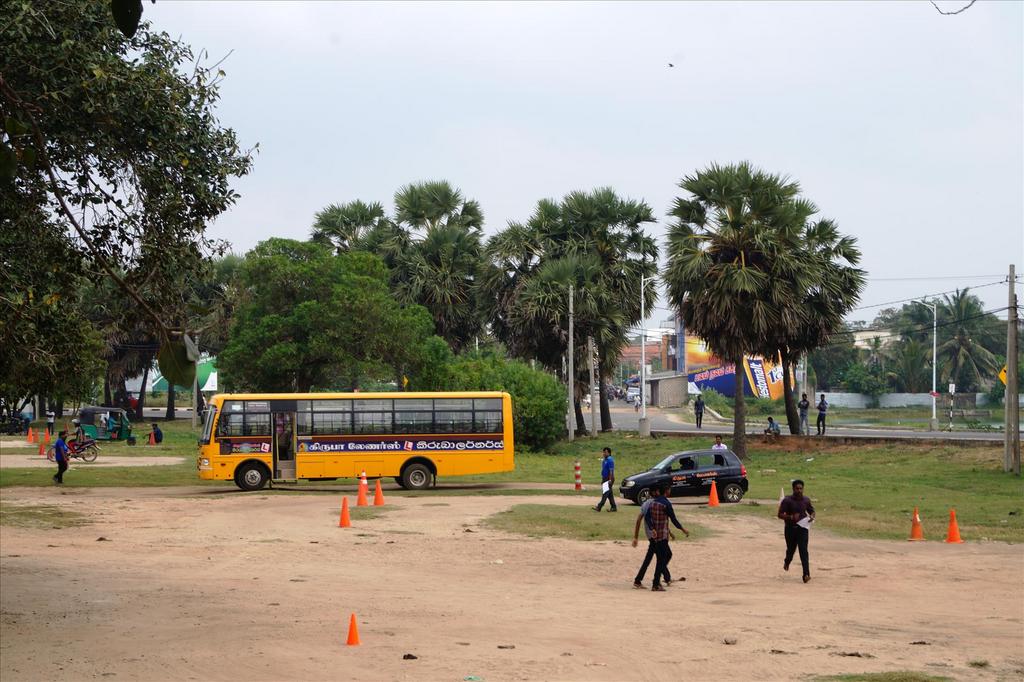 |
|
|
|
Post by onlyMark on Mar 13, 2018 17:34:02 GMT
I stopped off at Jaffna Fort but didn't stay long as there is again, as with the one in Trincomalee, not a lot left of it. Built again by the Portuguese, in 1618, captured by the Dutch in 1658 and taken over by the British in 1795 who retained control of it until 1948 (Independence Day). From 1986 until 1995 it was in the hands of the LTTE (Tamil Tigers) but after a 50 day siege, reverted back to the government. It does still have a Sri Lankan army garrison inside somewhere, hence access is restricted –  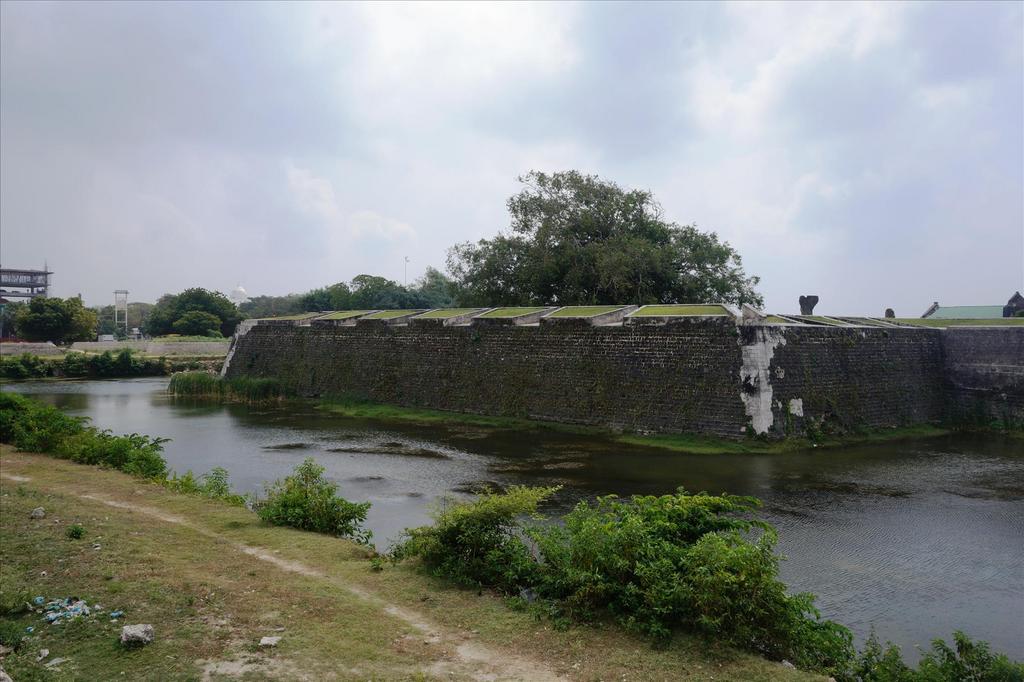 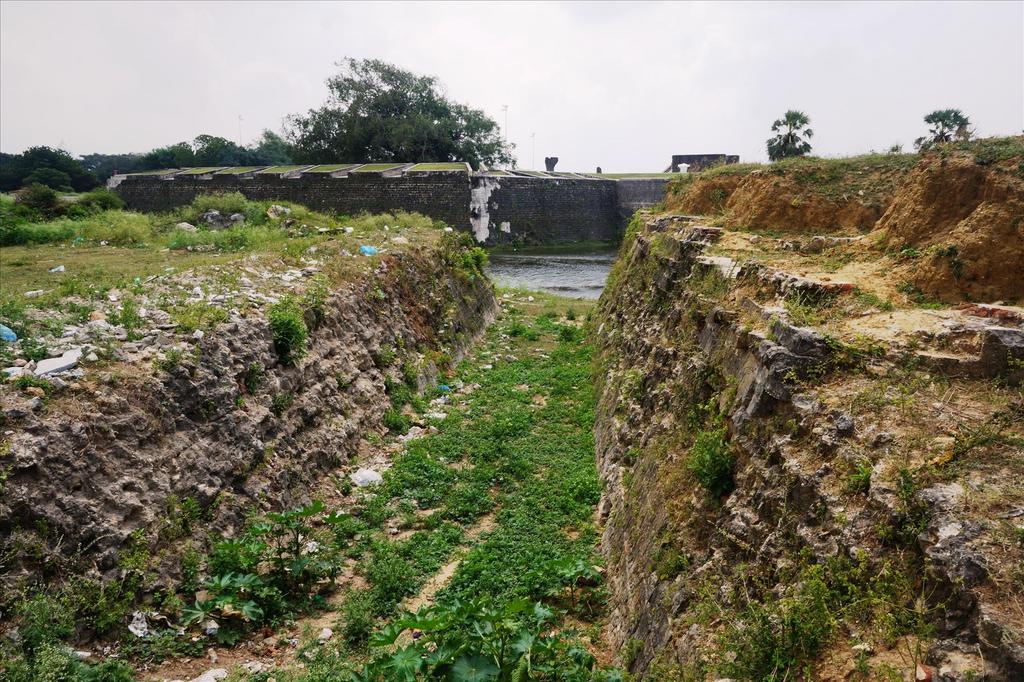  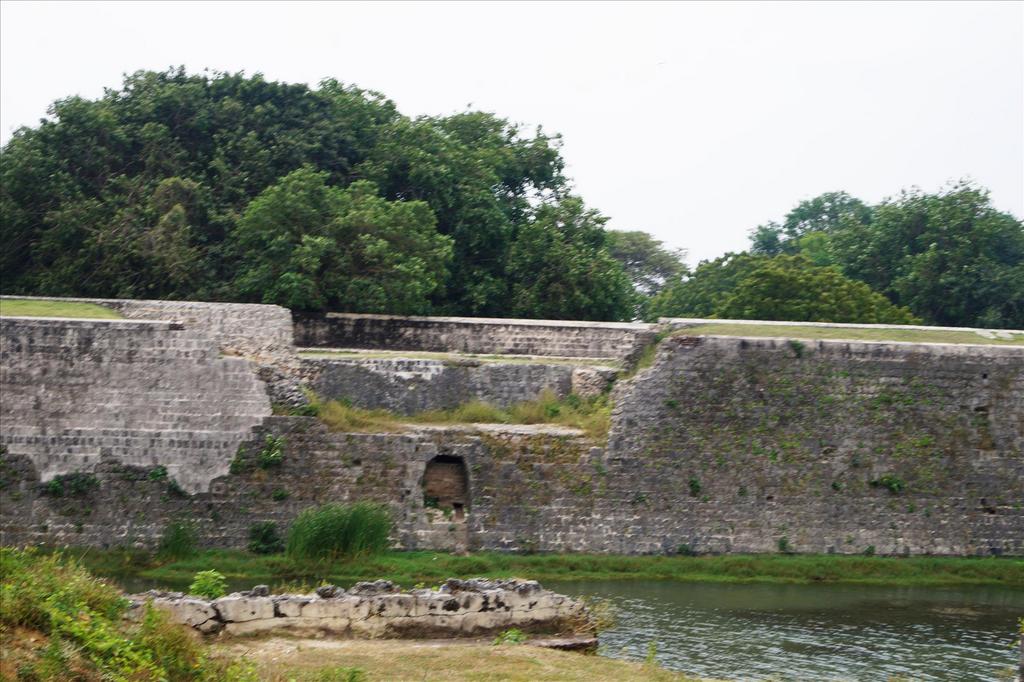 A late lunch was called for as I'd had breakfast and felt reasonably full until mid-afternoon. A thali, which whilst normal in India, takes a bit of finding here. Cost one Euro probably though I can't remember for sure. I know that if it was a lot more I would have remembered – 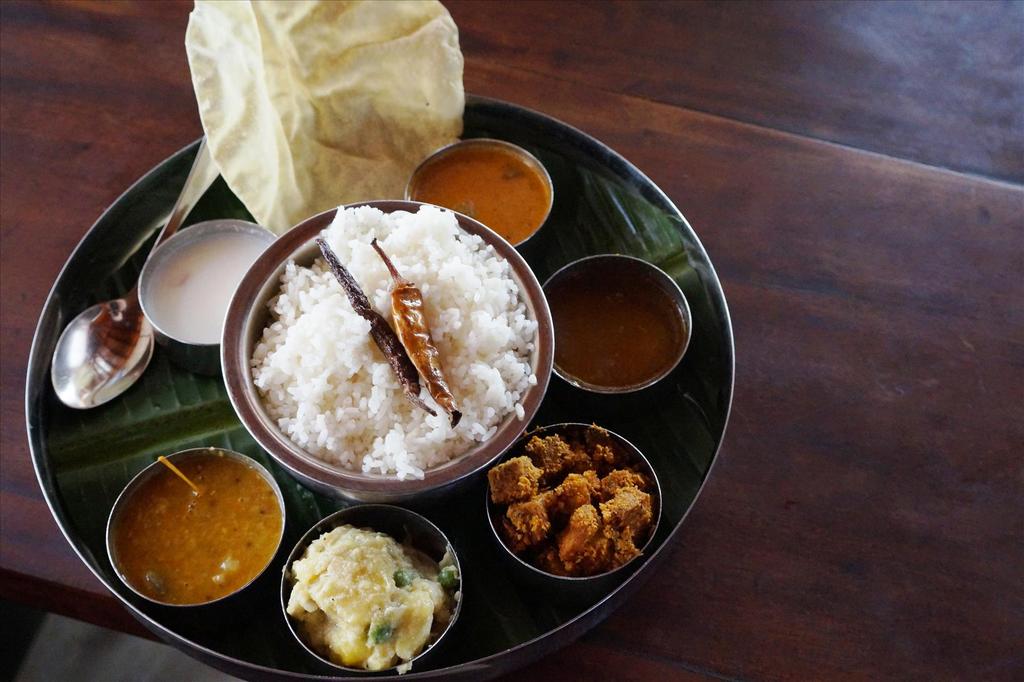 |
|
|
|
Post by onlyMark on Mar 13, 2018 17:35:14 GMT
|
|
|
|
Post by onlyMark on Mar 13, 2018 17:37:23 GMT
Bear with me if some of the photos don't show. It's either my internet or Proboards mucking me about a bit when I'm trying to check and post them.
I'll come back to it tomorrow or later tonight to check and adjust if necessary.
|
|
|
|
Post by mossie on Mar 13, 2018 19:49:50 GMT
I am seeing plenty of photos. All very very colourful and overpowering, not to mention the food, the smell is wafting out of my monitor as i peck away at the keys.
A marvellous travelogue for the country, but no way will it induce me to visit.
|
|
|
|
Post by onlyMark on Mar 13, 2018 20:16:34 GMT
You don't live next door to an Indian takeaway do you?
|
|
|
|
Post by onlyMark on Mar 14, 2018 18:57:24 GMT
|
|
|
|
Post by onlyMark on Mar 14, 2018 19:01:07 GMT
|
|